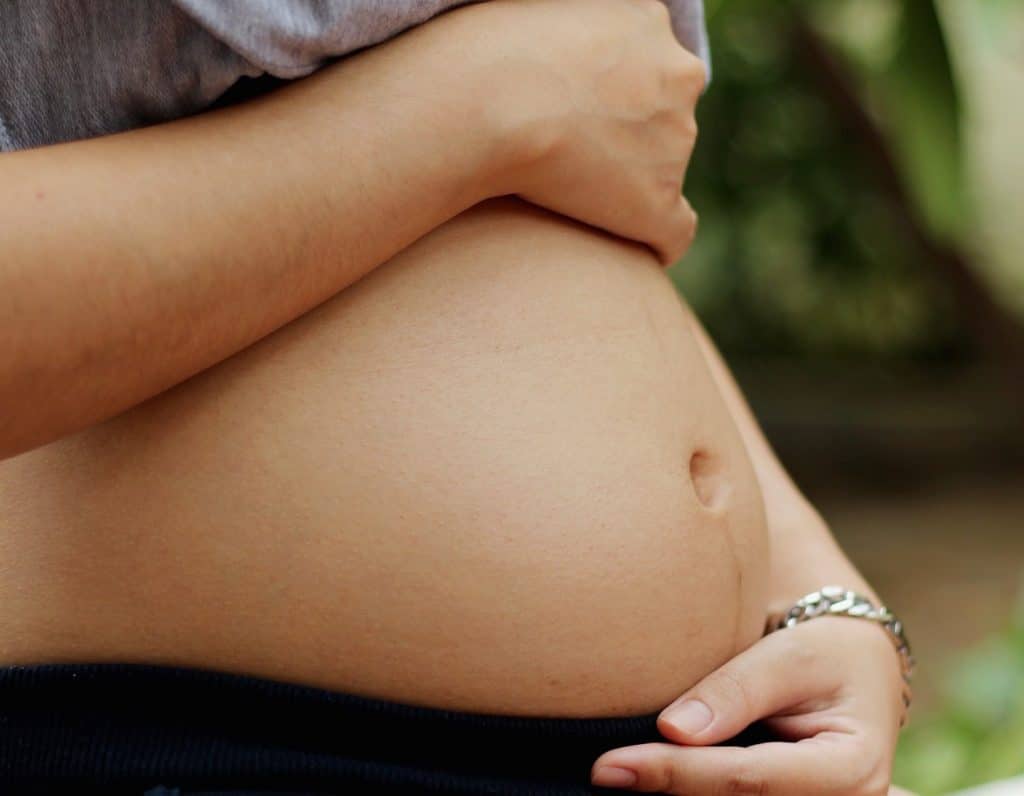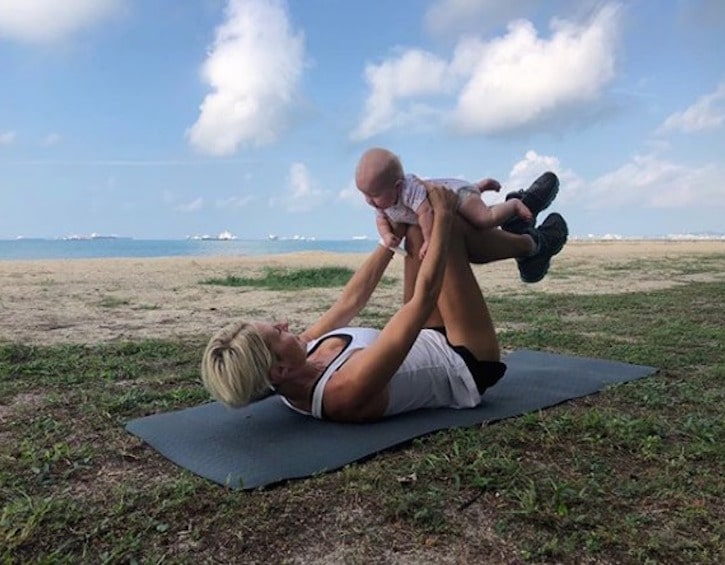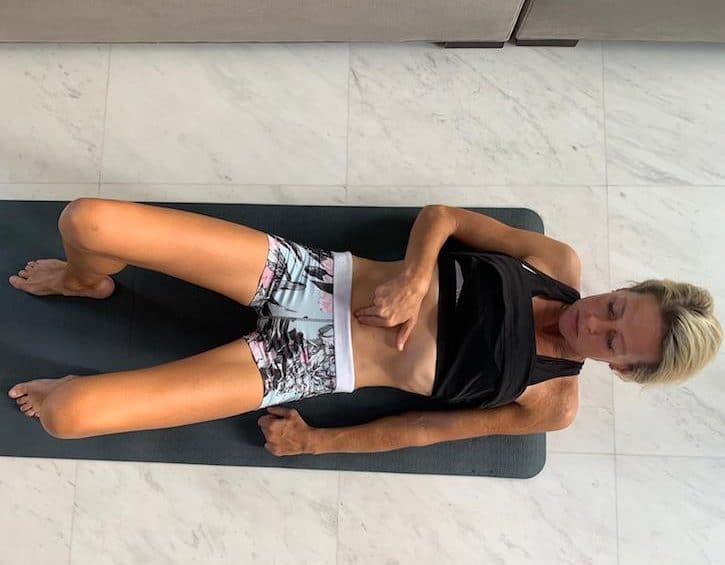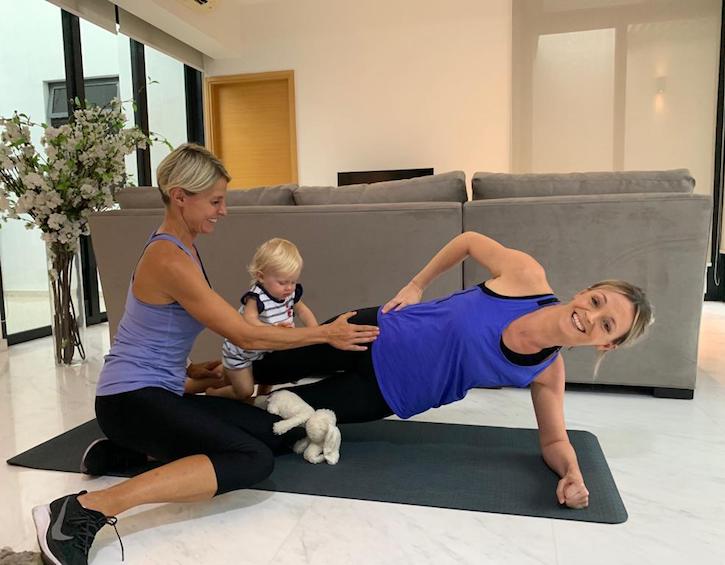
 Post Category - WellnessWellness - Post Category - HealthHealth - Post Category - FitnessFitness
Post Category - WellnessWellness - Post Category - HealthHealth - Post Category - FitnessFitnessA physio, personal fitness trainer, and new mama answers everything you’d want to know about Diastasis Recti the dreaded ‘mummy tummy’…including how to prevent it during pregnancy to make things easier down the line
Rebecca (Bex) Aldridge – physio, new mama, and pre- and post-natal exercise guru – has become a go-to for mums in Singapore seeking help returning to exercise. Inspired to create health2mama after the birth of her own daughter, she has been helping mums regain their strength and fitness. We are excited to be partnering with Bex on a weekly series that will look at the right exercises to address Diastasis Recti (aka mummy tummy), the importance of pelvic floor exercises, and how to exercise safely during your pregnancy. Check out her insightful tips and videos on her popular Instagram account, and be sure to check out our Instagram Stories every Thursday for more of Bex’s exercise tips!

First off, a little about me…
I am a physio and personal trainer of 17 years, specialising in prenatal and postnatal care. In early 2018 I became a mum for the first time, giving birth to my daughter Aria by C-section. I found the recovery difficult: having to lift car seats and prams into taxis to make appointments (when told to not lift more than a kettle for 12 weeks), becoming acclimatised to a baby’s schedule and having a diastasis recti myself (healed through my own rehab).
Any mum will know that attending an appointment with a crying baby is a nightmare. Then I had the lightbulb moment of realising that a home physio service would make such a difference to mums to have a physio and trainer come to them. Working out is difficult with a baby/toddler, but to have someone who can fit in with your schedule is a dream. And for those mums keen to include the baby in the workout that works, too — I loved to do it with Aria! I know that the mums we see under Health2mama also feel safer starting training again after birth when they know their trainer is also a physio.
What’s the #1 issue you see in your practice?
Mums we see in our physio and personal training practice often assume they have a ‘mummy tummy’ or ‘paunch’ due to being out of shape after having had a baby. Before finding us they have likely tried running and tons of sit ups and planks, or signed up to boot camps and fitness classes, but their tummy just will not shift and they still look 3 months pregnant. Sometimes, in fact, some mums find the exercise makes their tummy bigger!
Frequently we find this issue to be the result of a Diastasis Recti Abdominis (separation of the abdominal muscles). Research by Mota et al in 2014 showed all mums have a Diastasis Recti by the 35th week of pregnancy, with some mums experiencing a separation as early as the 2nd trimester. In approximately 40% of women the diastasis recti separated muscles will still be a problem 8 weeks after giving birth and will need rehab for help to heal. What is going on?
Diastasis Recti is when you are pregnant and the tummy expands to accommodate the growing foetus. As a result there is an increase in intra-abdominal pressure leading to a split of the rectus abdominis (6-pack) muscles and a stretching of the linea alba, which is the connective tissue between the muscles. When it stretches, this linea alba becomes thin and weaker (think of stretching out some old yoga pants as you bend over).
Now when you have had the baby, sometimes you can still have a gap and a weakened linea alba connective tissue, which provides no tension to hold your abdominal contents back. Signs of this include bloating being more of an issue than before, doming of the tummy when you exercise or sit up, low back pain/pubic pain, and loss of bladder control.
How to tell if you have mummy tummy/DR?
Here are two simple tests you can do at home to check if you have a diastasis recti. They are not really valid until about 6-8 weeks postpartum, as your uterus will be still shrinking over this period of time:
1) The head lift test. Lie on floor with your legs bent and place two fingers with tips pointing down 2 inches above belly button and lift your head only. Then do this again at the level of your belly button, and finally again with fingers 2 inches below belly button.
2) Lie on your back and lift one leg up, keeping it straight, then lower and repeat on the other side

What to look out for with each test?
- Do you have back or pubic pain?
- Is there a gap or separation of your rectus abdominis (6-pack muscles)?
- Any bulging, coning or ridge of your abdomen?
- Any bulging or pushing out sensation in your vagina?
What can moms do during pregnancy to lessen the impact of mummy tummy postpartum?
It is so important to get started on working the pelvic floor and deep abs during pregnancy to increase the chances a diastasis recti resolving soon after birth. Pregnant mums need to be aware of signs that the separation has started. If your tummy is bulging or coning, or you are seeing a ridge when exercising, lifting, sitting up or getting out of bed and leaning backwards it means you are straining too much! There are things you can do to prevent your abs separating too much, and the the linea alba from stretching too much and becoming weaker:
- Make sure you are working your deep core muscles and pelvic floor correctly
- Always roll onto your side when getting up and lying down until you have had your baby and your diastasis recti has healed
- Avoid any exercises that cause this such as ab curls, planks, or ab exercises using legs (such as butterflies and scissor legs)
What are some misconceptions about working out?
The same as during pregnancy — the exercises such as ab curls, planks, ab exercises involving legs will cause the diastasis recti gap to widen and the linea alba to stretch more unless you are strong enough in your core and pelvic floor to stop this from happening. As a result your tummy will never reduce and may become worse. Going back to jumping exercises and running sports before you are strong enough will also make things worse.

Is it possible to fully get rid of mummy tummy?
There are a number of steps to follow to significantly reduce your mummy tummy. The sooner the rehab exercises start the quicker the results will be, but the rehab can start anytime after birth – even years. Whether you will get rid of it completely varies from mum to mum (and her individual dedication to the cause). If there is excess fat then a controlled diet (which we can advise on) is recommended. The exercises to heal the distasis set need to be done daily for 10-15 minutes to see results. With some mums a significant improvement will be seen in 8 weeks – for others it can take longer, extending to 9 months or even a year of daily following the exercises.
The diastasis recti rehab programme steps are:
- Learning to re-engage your pelvic floor and deep ab muscles
- Challenging the muscles with specific exercises
- Progressing the exercises
- Progress to including exercises that are specific to the sports and fitness classes that you love, ensuring you are strong enough to do them safely
It is rare, but there are mums whose separation and stretching of the linea alba have been severe enough that surgery to repair the diastasis recti will be required. Your physio or doctor can confirm this.
Check out health2mama’s video on lunchtime DR exercises. Good luck, mama!
View this post on Instagram






 View All
View All





 View All
View All








 View All
View All






